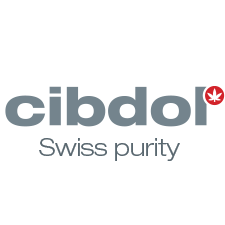How Can CBD Help In The Fight Against Acne?
Last updated:
Published:

Chances are, you’ve heard of CBD by now. This cannabinoid has gained massive traction within the worlds of medicine, health, and fitness. But this wasn’t the case only a few years ago. The non-psychoactive nature of CBD caused many recreational cannabis users to brush it aside, but it’s finally receiving the attention it deserves as medical cannabis becomes more widespread. CBD, along with other cannabinoids, exerts its physiological effects on the body primarily by interacting with the endocannabinoid system.
HOW CBD WORKS
As you can probably tell by the name, the endocannabinoid system has a close association with cannabis. The system is comprised of a series of receptors that exist on the membranes of many cell types throughout the body. So far, two main receptor sites have been identified, known as the CB1 and CB2 receptors.
Cannabinoids such as CBD influence these receptor sites to varying degrees, achieving their effect due to the structural similarity to endogenous cannabinoids synthesised within the body. CBD has a low affinity for cannabinoid receptors, but works to influence the endocannabinoid system in various indirect ways. The molecule also binds to other sites within the body, such as the 5-HT1A and vanilloid receptors.
CBD is renowned for its anti-inflammatory, neuroprotective, and anticonvulsant properties. Its ability to combat inflammation is partly what makes it so effective at soothing the side effects of skin conditions such as acne.
Within the skin, the endocannabinoid system is responsible for the the proliferation, growth, and differentiation of various cell types. The system also plays a role in apoptosis (controlled cell death) and hormone production.
Imbalances within the endocannabinoid system are believed to play a key role within the root cause of skin conditions such as psoriasis, dermatitis, and acne. The CB2 receptor of the endocannabinoid system provides a potential target receptor in the treatment of acne. Targeting the receptor with CBD inhibits the production of sebum excreted by the sebaceous gland, a key factor of the condition.
CBD AND ACNE
A 2010 paper discussing the use of CBD in the treatment of acne mentions that applying endocannabinoids to human cell lines boosts lipid production. Lipids, or fats, play a role in clogging up skin pores. The endocannabinoids caused an upregulation of lipid production when stimulating the CB2 receptor. However, when CBD was applied to cell lines, endocannabinoids were unable to produce lipid synthesis.
CBD achieves these effects not by targeting cannabinoid receptors, but rather by influencing ion channels expressed on sebocytes (sebum-producing cells). The authors of the paper also state that the well known anti-inflammatory effects of CBD may contribute to the treatment of acne, as the skin condition often produces highly inflamed zits. CBD has also been shown to penetrate the skin readily, making it a great topical option.
WHAT IS ACNE?
Acne vulgaris is a common skin condition that is caused by a buildup of oil within the pores of the skin. The condition can affect many different people, although it most commonly occurs in teenagers undergoing puberty due to hormonal changes. 80% of adults experiencing acne are women. The risk factor of developing the condition also increases if other members of your family have been diagnosed at some point.
Acne can be found almost anywhere on the body, with the most commonly affected areas being the face, back, neck, and shoulders. People with acne will notice various types of blemishes on their skin. The most common are whiteheads and blackheads. However, other lesions can occur as a result of inflammation, such as papules, pustules, nodules, and cysts.
The cause of these zits is blocked skin pores, which can become obstructed by dead skin cells, dirt, and bacteria. When it comes to acne, an overproduction of sebum is the culprit. Sebum is secreted by sebaceous glands, which are located in hair follicles. Sebum is required by the skin for lubrication. However, too much of this oil can cause bacterial buildup in pores and dead skin cell accumulation.
Acne has various triggers and risk factors such as hormonal changes, medications like birth control pills, and refined carbohydrates. Certain preventative measures can be taken to stave off acne, such as showering after exercise, eating a healthy diet, reducing stress, and washing the face twice per day.
Conventional treatments for acne include medications that work to kill the bacteria inhabiting skin pores. CBD is proving to be an effective treatment for the skin condition, and may soon be seen as a standard part of an acne treatment regimen.
ABOUT CIBDOL ACZEDOL
Aczedol is a class 1 medical device salve, specifically formulated to alleviate the itching and burning sensations associated with acne vulgaris. The main ingredient is colloidal oatmeal, which supports and protects irritated skin with a supportive layer. Colloidal oatmeal also acts as a mild cleanser for the skin, as oats contain saponins, chemicals that work like soap to rinse away grease and oil. It can also assist with reducing bacteria and decreasing redness and inflammation.
The presence of CBD-rich Cannabis sativa extract within Aczedol further enhances the soothing properties of the cream. The specially crafted formula protects fragile and sensitive skin affected by acne, which allows CBD’s restorative and antibacterial functions to penetrate deep into the skin, where it is needed most.








.png)




